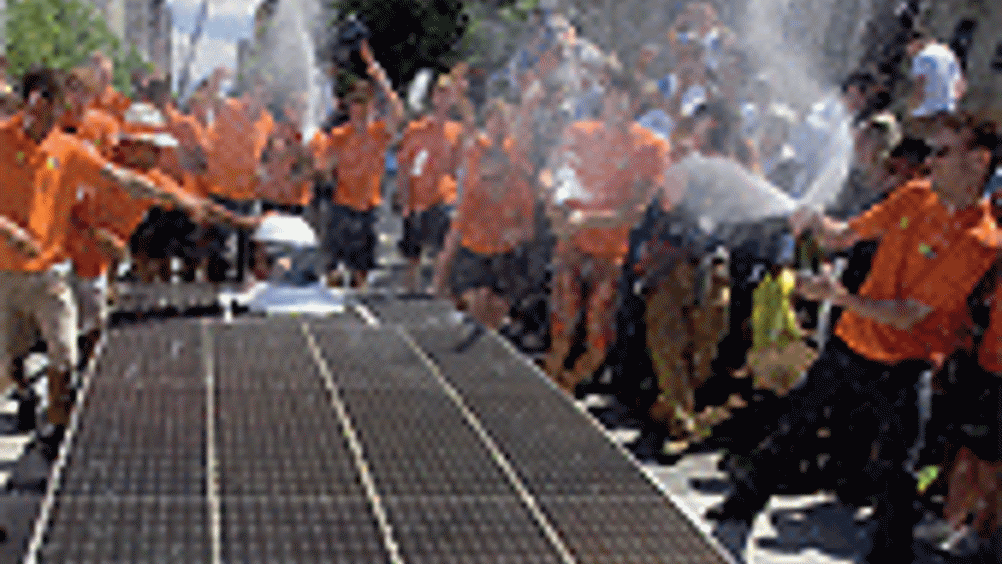Lighting the way with solar-powered cars
The World Solar Challenge sees the latest in solar-powered vehicle technology. But are we likely to see such cars on our roads soon? Jon Excell reports

Nothing much happens in the Australian outback town of Coober Pedy; a place so inhospitable that most of its population lives beneath the ground in converted opal mines.
But later this year its citizens will step blinking into the daylight as a bizarre-looking convoy of vehicles, powered purely by energy from the sun, sweeps at high speed along its dusty main road.
That’s because Coober Pedy is one of the very few towns along the route of the 2009 World Solar Challenge, a gruelling 1,689-mile race from Darwin to Adelaide along the infamous Stewart Highway — a interminably long and straight stretch of road bedevilled by sand storms, bush fires and blistering heat.
It won’t be the first time solar cars have travelled this way. The competition has been running every couple of years since 1987.
But while the conditions still provide a stern test for the engineers involved, it is fair to say that the esoteric vehicles are up to the challenge. Indeed, in the 2007 race competitors regularly struggled to stay below the 110km/h South Australian speed limit.
Register now to continue reading
Thanks for visiting The Engineer. You’ve now reached your monthly limit of premium content. Register for free to unlock unlimited access to all of our premium content, as well as the latest technology news, industry opinion and special reports.
Benefits of registering
-
In-depth insights and coverage of key emerging trends
-
Unrestricted access to special reports throughout the year
-
Daily technology news delivered straight to your inbox











Water Sector Talent Exodus Could Cripple The Sector
Maybe if things are essential for the running of a country and we want to pay a fair price we should be running these utilities on a not for profit...